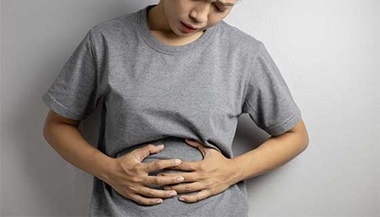Gastrointestinal Bleeding or Blood in the Stool
What is gastrointestinal bleeding or blood in the stool?
The signs of bleeding in the digestive tract depend upon the site and severity of bleeding. If blood is coming from the rectum or the lower colon, bright red blood will coat or mix with the stool. The cause of bleeding may not be serious, but locating the source of bleeding is important. The digestive or gastrointestinal (GI) tract includes the esophagus, stomach, small intestine, large intestine or colon, rectum and anus. Bleeding can come from one or more of these areas — from a small area like an ulcer on the lining of the stomach or from a large surface, such as an inflammation of the colon. Bleeding can sometimes occur without the person noticing it. This type of bleeding is called occult or hidden. Fortunately, simple tests can detect occult blood in the stool.
Symptoms
Symptoms like changes in bowel habits, stool color (to black or red) and consistency and the presence of pain or tenderness may tell the doctor which area of the GI tract is affected. Because the intake of iron, bismuth or foods like beets can give the stool the same appearance as bleeding from the digestive tract, a doctor must test the stool for blood before offering a diagnosis.
Other symptoms:
-
Bright red blood coating the stool
-
Dark blood mixed with the stool
-
Black or tarry stool
-
Bright red blood in vomit
-
Coffee grounds appearance of vomit
Diagnosis
The site of the bleeding must be located. A complete history and physical examination are essential. A blood count will indicate whether the patient is anemic and also will give an idea of the extent of the bleeding and how chronic it may be.
Endoscopy
Endoscopy is a common diagnostic technique that allows direct viewing of the bleeding site. Because the endoscope can detect lesions and confirm the presence or absence of bleeding, doctors often choose this method to diagnose patients with acute bleeding. In many cases, the doctor can use the endoscope to treat the cause of bleeding as well. The endoscope is a flexible instrument that can be inserted through the mouth or rectum. The instrument allows the doctor to see into the esophagus, stomach, duodenum (esophagoduodenoscopy), colon (colonoscopy) and rectum (sigmoidoscopy); to collect small samples of tissue (biopsies); to take photographs; and to stop the bleeding. Small bowel endoscopy, or enteroscopy, is a procedure using a long endoscope. This endoscope may be used to localize unidentified sources of bleeding in the small intestine.
Other procedures
Several other methods are available to locate the source of bleeding. Barium X-rays, in general, are less accurate than endoscopy in locating bleeding sites. Some drawbacks of barium X-rays are that they may interfere with other diagnostic techniques if used for detecting acute bleeding, they expose the patient to X-rays and they do not offer the capabilities of biopsy or treatment. Another type of X-ray is a CT scan. Angiography is a technique that uses dye to highlight blood vessels. This procedure is most useful in situations when the patient is bleeding acutely, so that dye leaks out of the blood vessel and identifies the site of bleeding. In selected situations, angiography allows injection of medicine into arteries that may stop the bleeding.
Treatment
Endoscopy is the primary diagnostic and therapeutic procedure for most causes of GI bleeding. Active bleeding from the upper GI tract can often be controlled by injecting chemicals directly into a bleeding site with a needle introduced through the endoscope. A physician can also cauterize, or heat treat, a bleeding site and surrounding tissue with a heater probe or electrocoagulation device passed through the endoscope. Laser therapy is useful in certain specialized situations.
Once bleeding is controlled, medication is often prescribed to prevent recurrence of bleeding. Medication is useful primarily for H. pylori, esophagitis, ulcers, infections and irritable bowel disease. Medical treatment of ulcers, including the elimination of H. pylori, to ensure healing and maintenance therapy to prevent ulcer recurrence can also lessen the chance of recurrent bleeding. Removal of polyps with an endoscope can control bleeding from colon polyps. Removal of hemorrhoids by banding or various heat or electrical devices is effective in patients who suffer hemorrhoidal bleeding on a recurrent basis. Endoscopic injection or cautery can be used to treat bleeding sites throughout the lower intestinal tract. Endoscopic techniques do not always control bleeding. Sometimes angiography may be used. However, surgery is often needed to control active, severe or recurrent bleeding when endoscopy is not successful.





